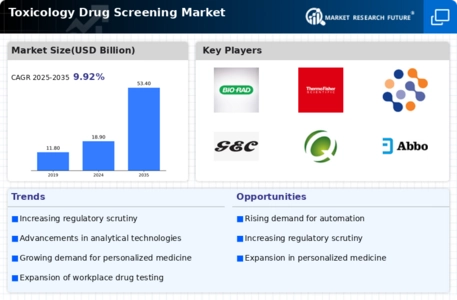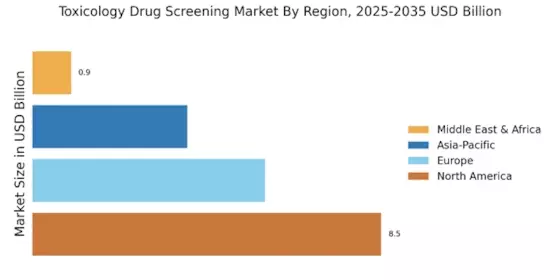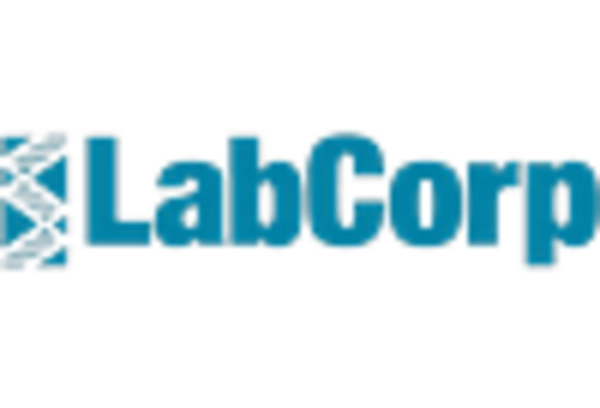Rising Substance Abuse Rates
The increasing prevalence of substance abuse across various demographics appears to be a primary driver for the Toxicology Drug Screening Market. Reports indicate that substance abuse has escalated, particularly among young adults and adolescents, leading to a heightened demand for effective screening solutions. In 2023, it was estimated that approximately 20 million individuals in the United States alone struggled with substance use disorders, underscoring the urgent need for comprehensive drug screening programs. This trend is likely to propel the market forward as healthcare providers and employers seek reliable methods to identify substance abuse and implement appropriate interventions. Consequently, the Toxicology Drug Screening Market is expected to expand as organizations invest in advanced screening technologies to address this growing concern.
Increased Workplace Drug Testing
The emphasis on maintaining a drug-free workplace is becoming increasingly pronounced, thereby driving the Toxicology Drug Screening Market. Employers are recognizing the importance of drug testing as a means to enhance workplace safety and productivity. According to recent statistics, nearly 70% of employers conduct drug tests, with a significant portion implementing random testing policies. This trend is likely to continue as organizations strive to mitigate risks associated with substance abuse, which can lead to accidents and decreased employee performance. As a result, the demand for reliable and efficient drug screening solutions is expected to rise, further propelling the growth of the Toxicology Drug Screening Market.
Growing Awareness of Health Risks
The rising awareness of the health risks associated with substance abuse is driving the Toxicology Drug Screening Market. Educational campaigns and public health initiatives are increasingly highlighting the dangers of drug use, leading to a greater demand for screening services. This heightened awareness is particularly evident in schools and workplaces, where stakeholders are advocating for proactive measures to identify and address substance abuse issues. As a result, organizations are more inclined to implement drug screening programs to promote a healthier environment. The market is expected to benefit from this trend, as the demand for effective screening solutions continues to rise in response to the growing recognition of the health implications of drug use.
Regulatory Mandates and Compliance
The implementation of stringent regulatory frameworks surrounding drug testing is a crucial driver for the Toxicology Drug Screening Market. Governments and regulatory bodies are establishing guidelines that necessitate drug screening in various sectors, including healthcare, transportation, and education. These regulations are designed to ensure safety and compliance, thereby increasing the demand for reliable drug screening solutions. For example, the Department of Transportation mandates drug testing for safety-sensitive positions, which has led to a surge in testing requirements across the industry. As organizations strive to adhere to these regulations, the Toxicology Drug Screening Market is likely to experience significant growth as they seek compliant testing solutions.
Technological Innovations in Screening Methods
Technological advancements in drug screening methodologies are significantly influencing the Toxicology Drug Screening Market. Innovations such as point-of-care testing, rapid testing kits, and advanced analytical techniques are enhancing the accuracy and efficiency of drug detection. For instance, the introduction of non-invasive testing methods, such as saliva and sweat analysis, is gaining traction due to their convenience and reliability. The market for these innovative solutions is projected to grow, with estimates suggesting a compound annual growth rate of over 10% in the coming years. As healthcare providers and employers increasingly adopt these advanced technologies, the Toxicology Drug Screening Market is poised for substantial growth.


















Leave a Comment